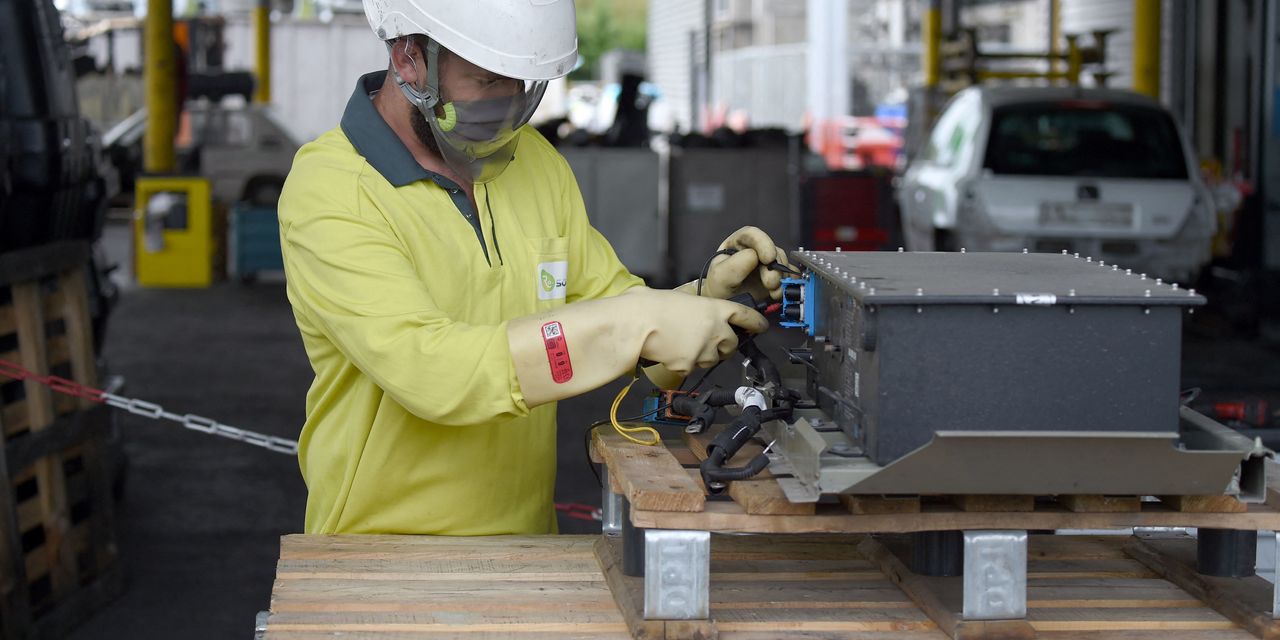
The International Energy Agency (IEA) said this year it’s expecting 145 million electric vehicles (EVs) worldwide by 2030. If governments ramp up efforts to meet international energy and climate goals, the number could soar even higher — up to 230 million — and that’s not counting two- and three-wheel vehicles.
That’s a lot of new cars to hit global markets. Also … a lot of batteries.
Although EVs do not release carbon dioxide during their use, their production exerts the same toll on the environment as that of conventional cars, while the recycling of lithium-ion batteries poses unique challenges.
Lithium-ion batteries are bulkier and take more space than their traditional counterpart, lead-acid batteries. To make matters worse, they’re highly flammable and even explosive if dismantled incorrectly.
In the next 10 to 15 years, there will be millions of end-of-life electric cars worldwide; by that time, recycling plants need to be ready not only to take in all those batteries, reclaim valuable parts and metals, but also to properly dispose of the waste. Sadly, not much is being done on that front: Currently, only 5% of all Li-ion batteries are being recycled.
If no action is taken, battery waste could become a big problem not only for the car industry, but also for the environment.
How big? If an average car battery pack weighs 550 pounds, 100 million cars would produce about 55 billion pounds — 28 million tons — of battery waste that needs recycling. And we can expect a big portion of that waste to accumulate by 2040 if the IEAs’ projections are even partially correct.
Water pollution
Although Li-ion batteries are classified by the federal government as non-hazardous waste and are safe for disposal in the normal municipal waste stream, several studies have shown they can contaminate the water. Nowadays, a lot of recycling is “informal” — it often occurs in less developed, rural areas and without proper supervision or protective measures in place.
With these kind of operations, there’s a high probability of lithium seeping into the water supply. A similar situation occurs in highly developed areas where people improperly dispose of consumer electronics, which are more often than not powered by Li-ion batteries. Finally, it’s not just lithium that can contaminate soil and groundwater. Nickel, cobalt, manganese and other metals found in EV batteries pose an even greater threat than lithium to both human life and the ecosystem.
The majority of material in EV car batteries can be recycled and reused, which in itself is an economic argument for extraction; extracting materials, especially metals, cobalt and nickel, from the old battery housing in order to be reused in a new batch is a procedure that can significantly reduce manufacturing costs. This is due to the fact that almost 50% of a battery’s cost comes from those metals alone.
Interestingly, one way of extracting metals from the batteries — smelting — is identical to extracting metal from ores but without the added environmental harm that comes with mining.
So, why aren’t more batteries recycled? The reason is that recycling plants don’t get much for scrap — about $100 per ton. This is by far superseded by logistics costs involved in collecting, sorting and transporting it.
Finally, to make enough batteries, we would need to triple the current production rates for lithium, graphite, nickel and manganese. An aggressive recycling regimen is absolutely necessary to meet increased demand for these materials and limit the environmental damage caused by mining.
Europe’s response
As with many other things, the European Union wants to tackle the problem with regulation. Proposed legislation seeks to place an increased regulatory burden on manufacturers, producers, importers and distributors of batteries that will need to take multiple steps to ensure compliance.
The document outlines significant new requirements covering manufacturing, design, labelling, collection and recycling throughout the battery life cycle for all battery types. It further states: “These measures have the potential to have a substantial impact on the market for batteries in the EU, improving sustainability, circularity and transparency across the product value chain.”
Although it has potential, the plan is not without significant flaws. It may put European manufacturers at a disadvantage compared to Chinese and U.S. counterparts. This may stifle innovation, inflate prices and slow adoption, putting into question Europe’s EV-proliferation plans.
However, there is some merit to those efforts, as manufacturers — at least those in Europe — are responding.
Nissan NSANY, -0.19% is reusing its old Leaf batteries to fuel factory vehicles. Volkswagen VWAGY, -1.94% recently opened its own recycling plant capable of recycling 3,600 battery systems per year. Renault RNLSY, -2.02% is currently recycling a several hundred batteries a year, essentially its entire production. Finally, in July, Mercedes DMLRY, -1.98% unveiled plans to go EV-only by 2030.
Former Tesla engineer’s plans
In the U.S., things are stirring too. JB Straubel, Tesla’s TSLA, +3.21% former chief technology officer, likes to say that the largest lithium mine is in the junk drawers of America. His recycling company, Redwood Materials, recycles scrap and defective battery cells for Envision AESC, which manufactures batteries for the Nissan Leaf, and Panasonic PCRFY, -0.50%, which makes cells at Tesla’s Nevada Gigafactory. The factory currently has the capacity to recover enough components to create 45,000 electric car battery packs a year.
In the end, it will all come down to execution. Recycling is a dirty business in more ways than one, and it will be up to all participants — from manufacturers to recycling plants and, ultimately, drivers — to play ball.
If done correctly, we could see recycling efforts offset a good deal of the ecological and economical cost of EV battery production. If not, the result could be a situation that’s much worse than the plastic pollution that’s fouling up oceans.










Add Comment